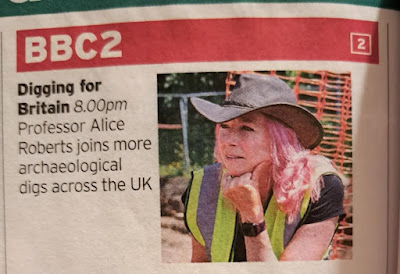We eventually spoke to Lois's cousin Iris in Southport, Lancashire, last night after a comic exchange in which she and Iris were ringing each other alternately on their mobile phones, but failing to answer each other's calls before they "timed out", due to both owners' unfamiliarity with their shiny-new handsets, provided, with admittedly thoroughly good intentions, by their Generation X offspring.
You probably saw that hard-hitting editorial by humorous columnist Adrienne Butler the other day.
As always, Adrienne's column struck a wickedly humorous tone, but also carried a serious message for smartphone developers: Get Your Act Together!
Today we make an attempt to speak to Lois's other cousin Brian, and Brian's wife Ruth, who live in Bournemouth, Dorset, but they're not answering their phone for some reason. All three of Lois's cousins - Brian and Ruth, and also Iris in Southport - are now living in care homes. They're all about 10 years older than us, and even less technologically aware than we are, which is saying something.
flashback to August 2019: Ruth and Brian's 60th wedding anniversary,
on stage with the original best man from their 1959 wedding, Terry,
and their two bridesmaids from 1959: Ann and Lois
Lois is particularly anxious not to lose contact with these three plucky "survivors", because she has so few close relations of our own generation, compared to myself with my slightly-too-large-if-I'm-honest (!! Only kidding!!!!) multitude of over 30 cousins!
But what a madness it all is!
20:00 Lois disappears into our kitchen-diner to take part in her church's weekly Bible Class on zoom.
I settle down on the couch and watch David Attenborough's interesting new documentary on the Giant Sea Monster (actually a rare example of a pliosaur), whose fossilised form was recently recovered from the cliffs at Kimmeridge Bay, Dorset, on Britain's so-called "Jurassic Coast".
The fossil was recently discovered by an amateur fossil-hunter when a fossilised piece of the pliosaur - its snout - fell off the cliffs and landed on the beach at Kimmeridge Bay, Dorset, on the county's "Jurassic Coast".
Tonight we see archaeologists recovering the remainder of the pliosaur's fossilised body from the cliffs using precarious methods, an operation fraught with challenges because basically these cliffs are slowly crumbling away, a bit like Lois and me, only a bit less quickly haha!!!!
This 40ft long pliosaur, from a previously unknown species of pliosaur, swam in the warm Jurassic Seas of 150 million years ago, at a time when Britain and Europe were an archipelago of islands, much closer to the Equator than they are today.
a delightfully boyish David Attenborough (left) discusses
the pliosaur's enormous fossilised snout with two researchers
at the local Kimmeridge Bay Museum
We see a lot of scientific stuff this evening, about how researchers can now tell so much nowadays about what prehistoric creatures could do, just from these lifeless lumps of rock, because they can still give clues about the original creatures' internal organs, sensors, blood vessels etc. and scientists can confidently hypothesise, for example, about how the pliosaurs would best have hunted down their prey.
Reconstruction: that "gotcha" moment
when the pliosaur catches its prey!
Ouch !!!!!!
Yes, pliosaurs all had ninety each of the most enormous triangular teeth, so sharp that scientists confidently believe that they could bite through a modern car if they took a notion to. My goodness!!!
Yes, they could have eaten your car or anybody else's car - Cadillacs, Lincolns too, Mercury's and Subaru, and even mine and Lois's humble little Honda Jazz, I wouldn't mind betting!
Do your remember that Blondie song Rapture, written by band members Debbie Harry and Chris Stein, the rap-style lyrics for which seemed so incredible to us in 1980, so much so that people were openly laughing at their implausibility. Well nobody's laughing now, are they!
Debbie Harry singing "Rapture" (1980)
What a truly crazy planet we live on !!!!!!
21:15 Lois emerges from her zoom session and we wind down on the couch with the second programme in Alice Roberts' new series "Digging for Britain" which gives an overview of the most spectacular archaeological discoveries made in the UK in 2023.
In tonight's programme Alice is concentrating on archaeological digs in the Midlands and South of England. And it's nostalgic for me tonight to see again the RAF/USAF base at Alconbury, Cambridgeshire, which I visited on a work trip from the office in 1980 or thereabouts, at what you might call the height of the Cold War, during the Brezhnev Era.
Happy days!!!! (Only joking there, by the way !!!!!!)
me and Lois in 1980: me visiting the world's best custard shop
in Harpers Ferry, Virginia, and Lois in my parents' back garden
This is a fascinating item for me, because the Roman or post-Roman remains found in 2023 under the base, ironically reference a similar period of uncertainty to that of the Cold War, when the Romans were leaving to go back and defend Rome, thereby encouraging Picts, Anglo-Saxons etc to harry the coastal defences and make their early tentative incursions.
You wouldn't think that anxiety and uncertainty would make much of a difference to the pottery remains, would you, but incredibly the edgy atmosphere here in the 5th century AD in Late Roman Britain seems to have been reflected in the remains, some of which look slightly wonky and not quite as "finished" as they would have looked in earlier centuries.
Maybe there were supply problems, or was there a shortage of skilled potters?
Fascinating stuff!!!!
There's also a riveting piece about a nunnery at Ankerwycke, just across the Thames from Runnymede, where the Magna Carta was signed with King John in 1215.
Apparently the local Bishop ordered an incredibly modern "Human Resources" investigation at the nunnery in 1441, when there were 7 nuns working there - the other six or so had already run away - oh dear!
The Bishop arranged individual staff-in-confidence interviews with all the remaining nuns, and incredibly the transcripts of these interviews have survived. The prioress in her interview complained that the nuns were always wingeing to her, at the slightest excuse.
But the nuns had good reason to winge, because it soon became clear to the Bishop from the nuns' evidence that the prioress had been siphoning off the nunnery's income to buy nice clothes and jewellery for herself. Meanwhile the nuns were all dressed in shabby clothes and given poor quality food at mealtimes, and that the buildings of the priory had been allowed to fall into disrepair.
Quite a scandal.
It's another interesting reminder of the less-than-spiritual atmosphere that prevailed in many church institutions at this period. In yesterday's programme in Alice Roberts' series, we learnt that when a shrine had holy relics to display, like the shrine to St Cuthbert at Durham Cathedral, it depended on how wealthy you were as to how close you were allowed to get to the saint's relics etc and to reap the promised "benefits" from the various bits and pieces.
St Cuthbert was supposed to have healed a lot of people in his lifetime so pilgrims flocked to Durham to "cop a feel" of some of his sacred relics. But to get to do that you first had to make a monetary payment to the shrine.
If you weren't very important or didn't have much money, you were allowed to come within a couple of feet of the shrine, it seems, but you would not be allowed to see the shrine itself.
What a crazy world they lived in, in those far-off times !!!!!
22:00 We go to bed - zzzzzz!!!!!






















































No comments:
Post a Comment